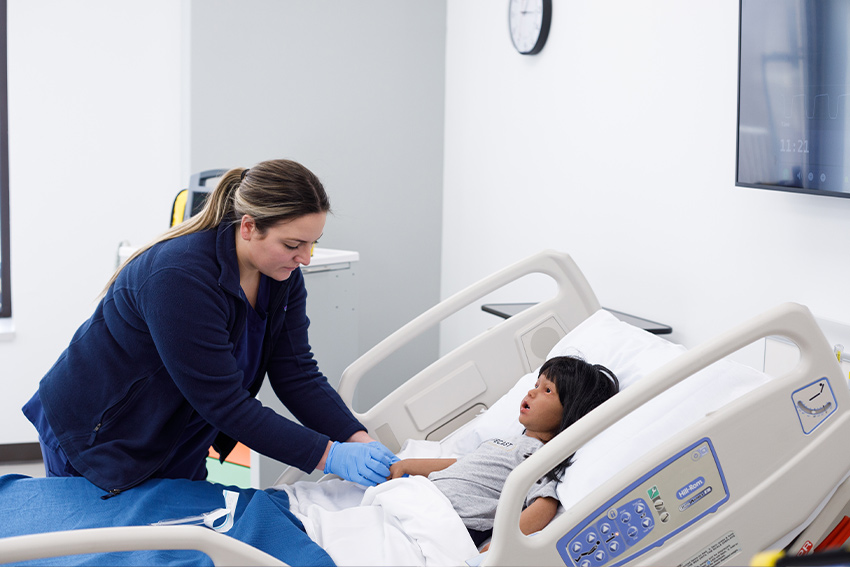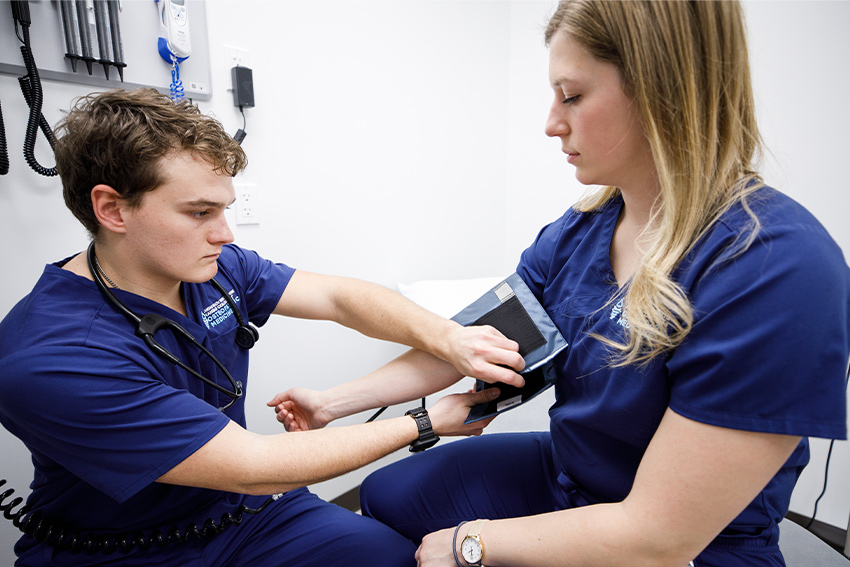About the Simulation Center
At Kansas College of Osteopathic Medicine (KansasCOM), we provide students with cutting-edge technological resources to bolster their program experience and improve their ability to discover techniques for optimal patient care. An interprofessional medical education curriculum includes multiple simulation-based learning modalities, which is why simulation is an essential part of our core curriculum. We are proud to offer our students access to the Simulation Center, which will serve as the training grounds for clinical research, professional development, and collaboration.
The state-of-the-art, 22,000 square foot Simulation Center is located in beautiful downtown Wichita—featuring two highly functional simulation labs and several other simulated-learning areas:
- In-patient wing modeled to resemble the hospital environment
- Out-patient wing designed to resemble a clinic or doctor’s office
- High fidelity manikin and hands-on task trainers
- Virtual classroom with augmented reality
Our innovative Simulation Center was meticulously designed to enhance the learning environment and needs of the modern-day medical student.
Research has shown that using interactive simulation experiences in conjunction with classroom learning develops better prepared clinical practitioners while improving quality health care, education, and patient safety.
The integral parts of the KansasCOM Simulation Center have foundations in adult learning theory, Standards of Best Practice in Simulation, Standards of Best Practice for Standardized Patients, and Core Competencies for Interprofessional Collaborative Practice.
The KansasCOM Simulation Center is also dedicated to education beyond its doors. There will be many opportunities for our community to collaborate with simulation and health care experts in simulation-based educational experiences.
In-Patient Setting
The in-patient wing is explicitly designed to replicate a hospital setting—featuring patient rooms, an operating/birthing room, an emergency/intensive care unit, and a student check-in. Each room has an adjacent control room for simulation technicians and faculty to observe the learner. The lab also features manikins (in varying sizes from infant to adult) that create a unique interactive learning environment.


Out-patient Setting
The out-patient wing is specifically designed for learners to interact with standardized patients (SPs) during simulations. It consists of twelve fully furnished exam rooms equipped with audio/video capture, a control room, a debriefing and meeting room, student and SP check-in, and an SP lounge. The purpose is to create an authentic clinical space where learners can sharpen their assessment and communication skills with live standardized patients.

